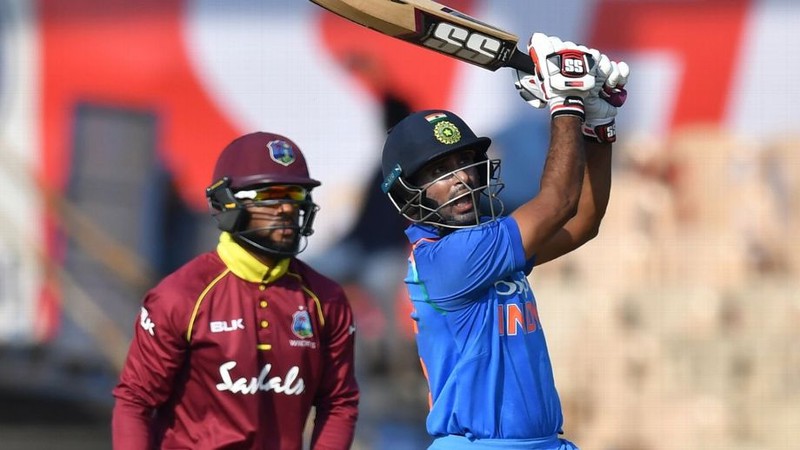
Ambati Rayudu played a supporting role to Rohit Sharma for most of the day, but the significance of his hundred cannot be understated. He became the first batsman from outside the top three to score an ODI hundred for India since January 2017. When he got to the landmark, he looked a relieved man, soaking in the applause from a slim Mumbai crowd with outstretched arms.
Rohit Sharma on the value of Rayudu's innings
"It was very important. Hopefully, he has solved all the mysteries of No 4. I guess till the World Cup there will be no questions on No 4. He batted brilliantly. At that point, a big partnership was needed, and it was also a perfect platform for him to showcase what he has got. There was pressure. Of course, after losing the top two batsmen, building a partnership was important. It was a pressure innings. I thought he responded really well to that situation. he batted freely once he got his fifty. He started playing those shots. We have known Rayudu for a long time and he can produce the kind of innings that he did today. That's probably the reason we got him at No 4, and he hasn't disappointed. He has done well in whatever opportunities he has got. He came back in Asia Cup and now he has grabbed the opportunity with both hands.
It was the completion of a circle in some sense: for a while after he had accepted BCCI's amnesty offer to return to recognised Indian cricket, Mumbai was Rayudu's home in the IPL. With this hundred, it could well be that he now has found one in the No. 4 spot for India. The real estate there has been volatile lately, but Rayudu seems like he has dug in a foundation ahead of the World Cup.
It is India's reward for openly showing faith in a batsman. Ahead of this series, Virat Kohli made no fuss when he said that Rayudu was "designed" for the role and that he would be given the opportunity to cement himself.
Rayudu has shown twice in this series what Kohli meant. In a team with so much power concentrated in the top three, the No. 4 is most likely to be tested on two fronts: how well he can steady the innings if two of those batsmen have fallen quickly, and how well he can transition into attack if the start is already there. In Visakhapatnam during the second ODI, Rayudu succeeded at the former. In Mumbai, he did a bit of both.
When Rayudu came in, at the other end was Rohit Sharma, for whom a hundred had seemed on the cards as early as in the fifth over, when he launched Kemar Roach onto the roof over midwicket. It was a run down the pitch and a swing through the line, on the up. From a batsman who prefers to stay behind the line and play by merit during the early parts of his innings, it was a statement: this pitch was his ally, and he was going to hit the ball wherever he wanted.
Rayudu's job here, just like it had been in Visakhapatnam with Kohli, was to not get out. Two wickets had fallen in the space of five overs and West Indies would have fancied pitting a red-hot Keemo Paul against MS Dhoni. Having begun with a pristine cover drive against Paul, Rayudu cut out his attacking strokes over the next hour or so. With Rohit opening up, there was no need to attack, and he didn't seek any adventure till the 29th over. He jumped down to meet left-arm spinner Fabian Allen's loopy delivery and drilled him over extra cover for one of his favourite shots.
That four had helped Rayudu get to 23 off 32. From there, he made 77 off 49 balls until he was dismissed. Most of this phase was built with a shoot-on-sight strategy, particularly against the spinners, whom he did not allow to settle at all. To Ashley Nurse, he went down the track to get six; to Marlon Samuels, he stretched out from the crease and used his hands to get the same result. He hit Allen over extra cover again, but before that, he had forced him to change the line to off stump, sweeping him over square leg.
Even seamers Roach and Jason Holder didn't quite know what to do - slower balls were hit for six off both the front and back foot; against yorkers, Rayudu had no trouble getting down and sweeping over the infield.
Comments